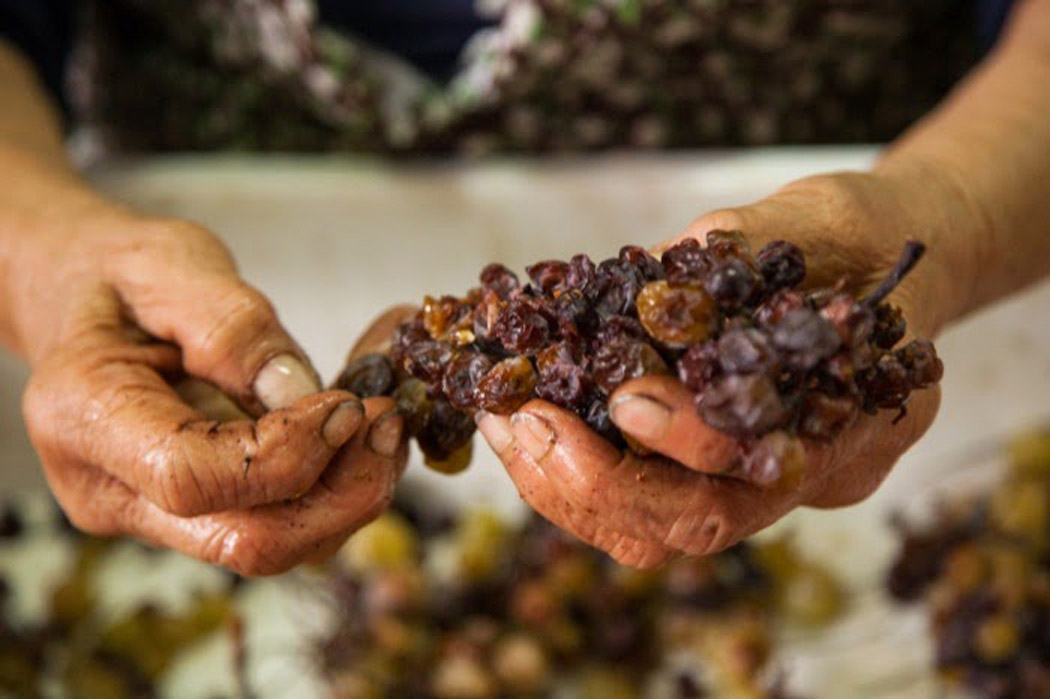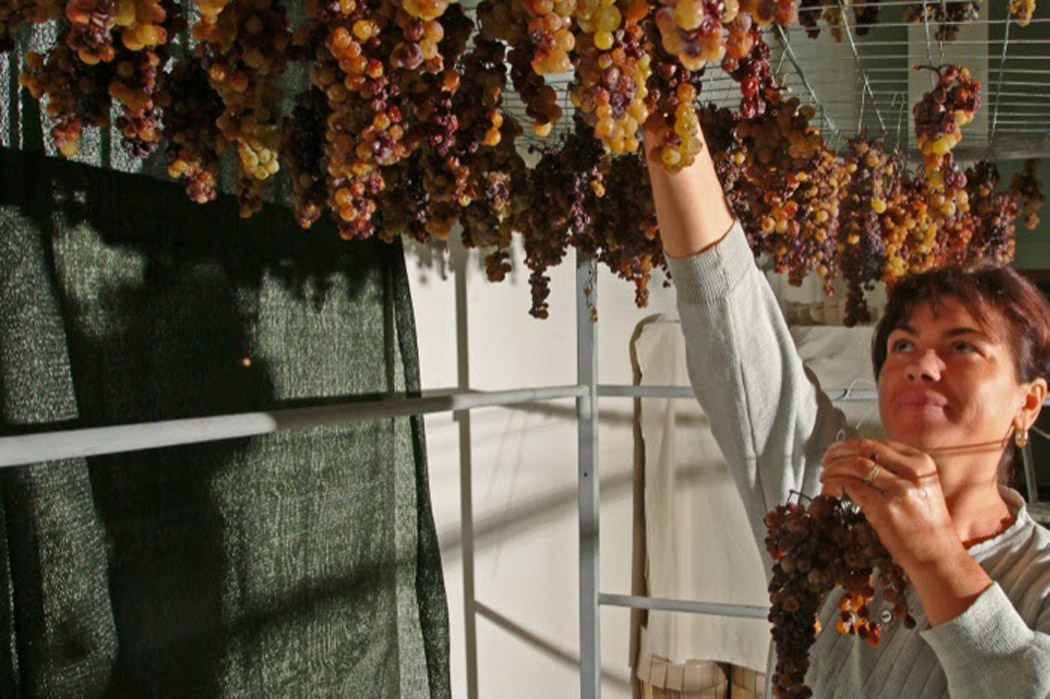At every party the most difficult choice is the combination between dessert and the right wine capable of enhancing its taste. How many times has your palate been spoiled by a dry wine that transformed the flavours making everything sour?
To accompany the Christmas panettone you need a sweet wine and the choice in Italy is very wide, but there are some specialities that deserve to be known and appreciated not only for the quality of the wine but for the tradition they tell.
This is the story of Moscato Passito di Saracena, a small town in Calabria between the Ionian Sea near the Piana di Sibari and the Pollino mountains, and of some native vines that grow by exploiting the synergy between sea and mountains.

This position creates a particular microclimate with warm days and cool nights even a cool summer so the wines manage to have a nice freshness and good acidity.
This sweet wine is made according to a unique tradition not only of Calabria but of all of Italy, and in fact it was selected as a Slow Food Presidium for the unique winemaking technique and the quality of a product that had almost disappeared. To tell its story, this was Pius IV's favourite wine in the sixteenth century.
The Moscato Passito di Saracena that we tasted is produced organically by the Viola cellars (https://www.cantineviola.it), at an altitude of 350 meters.
And it is precisely to Luigi Viola, father of the brothers who today run the company, that we owe the rediscovery and enhancement of this ancient tradition of Saracena where the wine is produced from grapes from 4 vine types and with a unique processing of its kind which can be divided into 3 phases.
Luigi was a master and he could not bear the idea that this wine produced with such a complex process risked disappearing forever. For this reason, around the year 2000 he decided to plant the vines and reestablish local knowledge.
His methodical work and the particular unique taste of this Moscato Passito wine have generated positive interest that has led other producers to recover their knowledge and today this area is also becoming a DOP at European level.
But let's get to the particular method of wine production that can be divided into three phases that correspond to the harvest of the grapes from the 4 selected vines and to a second fermentation.

The grape varieties are Guarnaccia at 50% and Malvasia at 50%, with which the must is produced, then aromatic Moscatello di Saracena and Addoroca grapes, the latter in small percentages.
The first phase begins at the end of August when the Moscatello di Saracena grapes (a native vine) and the Odoacra or Adduroca (which means fragrant scented in dialect) are harvested. The grapes are picked slightly after ripening on the vine and the bunches are then hung in an airy cellar with iron hooks, the so-called hanging method.
Within a week, the grapes wither and remain in this way for almost a month.
The second phase begins in the first ten days of October with the harvesting of the other two white berried grapes: Guarnaccia (still a native vine of Saracena) and Malvasia Bianca.
Their must is boiled over a direct flame (cooked musk) and in this way the alcohol is concentrated, the sugar content is raised and resistance to oxidation increases, so there is no need to add sulphite.
At this point the must is placed in steel tanks and left to cool naturally.
Finally, in the third phase, the women select the individual grapes of the raisin bunches, removing those that have soured. They crush the rest with their hands to avoid breaking the seeds according to a 'know-how' that was handed down in Saracena for centuries and which risked being lost.
The raisins are then finally put into the concentrated must and a new slow fermentation begins, with the grape's indigenous yeasts, for a couple of months.
The dried grapes are allowed to perfume the concentrated cooked must remaining for about 6 months. The perfumes are sold and then it is filtered and another refinement is carried out in steel for 12 months and then in the bottle for 1 year.
Thanks to this complex production method, Moscato Passito di Saracena has unique aromas and an important acidic shoulder that balances the sweetness and goes well with panettone and dry pastries. But also with aged or blue cheeses.
We participated in a tasting organized by the FIS, Italian Sommelier Federation where the great Luciano Mallozzi introduced us to all the nuances of the flavours of Moscato Passito di Saracena.
The perfect match for the tasting was the one with the classic panettone of Dolcemascolo di Frosinone, considered by critics one of the best panettone in Italy and Matteo Dolcemascolo is the best young pastry chef in Italy.
Particular aromatic sensations of dehydrated and dried fruit with resinous notes, orange blossom, chamomile, dandelion honey, a note of the Mediterranean scrub, iodized notes, dates and a delicate spiciness with hints of cinnamon and cardamom. This is part of the riot of sensations that this wine has given us and which has left a pleasant persistence.
The aromas of Moscato Passito di Saracena merged with those of panettone, accompanying the pleasantness of tasting, and the amber-mahogany colour with a coppery note brought us back to the warmth and colours of the holidays.
A wine that deserves to be tasted and a unique story that deserves to be told to discover more and more how beautiful our territories are and how many trips we can make to discover them.









Follow us